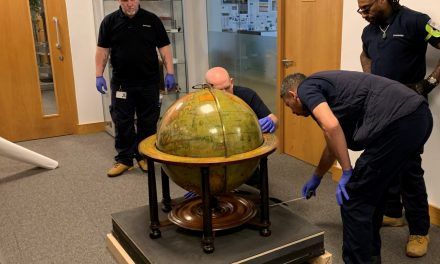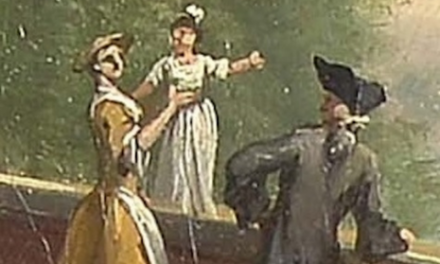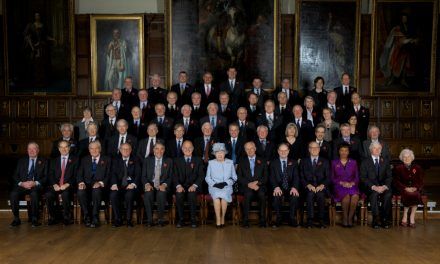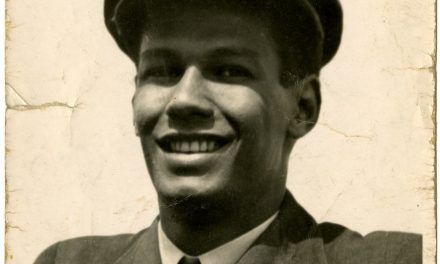When passing through Middle Temple Hall, the Bench Apartments, and the Ashley Building, one is greeted by walls adorned with paintings, and in doing so, one observes a prevalence of male representation – in both subjects and artists. As, for much of the Inn’s history, women were unable to join as members of the Inn, there are few individual portraits of female sitters within the collection. There are four paintings of royal female sitters, and three of non-royal female sitters, and six of the portraits in the collection are painted by five different female artists.
The royal female sitters depicted in portraits around the Inn consist of: Queen Elizabeth I, Queen Anne, and the Queen Mother (of whom the Inn owns two paintings). The largest of these is that of Queen Anne, whose full-length portrait, commissioned by the Inn shortly after her accession to the throne, hangs in Hall. Nearby hangs a portrait of Queen Elizabeth I, a painting which may date from the 18th or 19th Century, and which was purchased by the Inn to remedy the perceived lack of a portrait of a Queen so closely associated with the building of Middle Temple Hall.
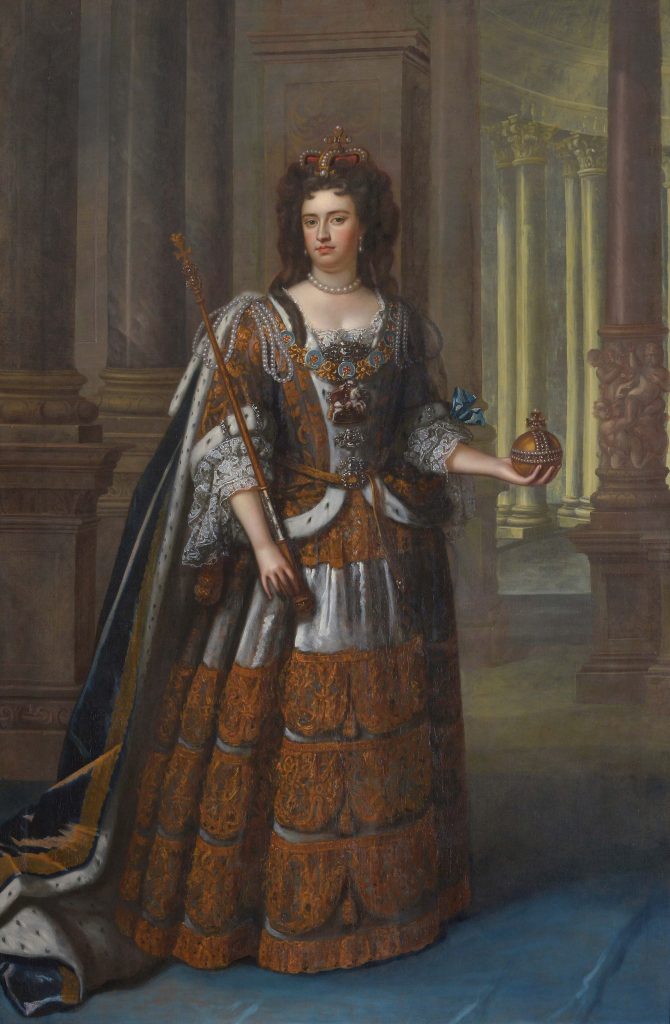
The Inn also possesses two paintings of the late Queen Elizabeth the Queen Mother. She was very closely associated with the Inn, having been made a Royal Bencher in 1944 – the first female Bencher of Middle Temple, Called to the Bench in the still bomb-damaged Hall. She served as Treasurer in 1949 and attended many events at the Inn over the next half century, from Grand Days to Family Dinners, and had an excellent relationship with the Inn’s Benchers.
While most of the artwork hanging in the Inn was created by male artists, there is a growing number of female-created paintings, which include the three portraits of non-Royal women in the collection.
The earliest painting in the collection by a female artist is a portrait of Francis Roxburgh, which was painted by Hariette Sutcliffe in 1887. The painting was presented to the Inn in 1965 by Ronald Roxburgh, grandson of Francis Roxburgh, and was later loaned to the Council of Legal Education and to the Oxford Crown Court. Sutcliffe was a London painter who lived in Hampstead, and between 1881 and 1899 she exhibited several pictures at the Royal Academy including A Posy for you, Sweetheart in 1892.
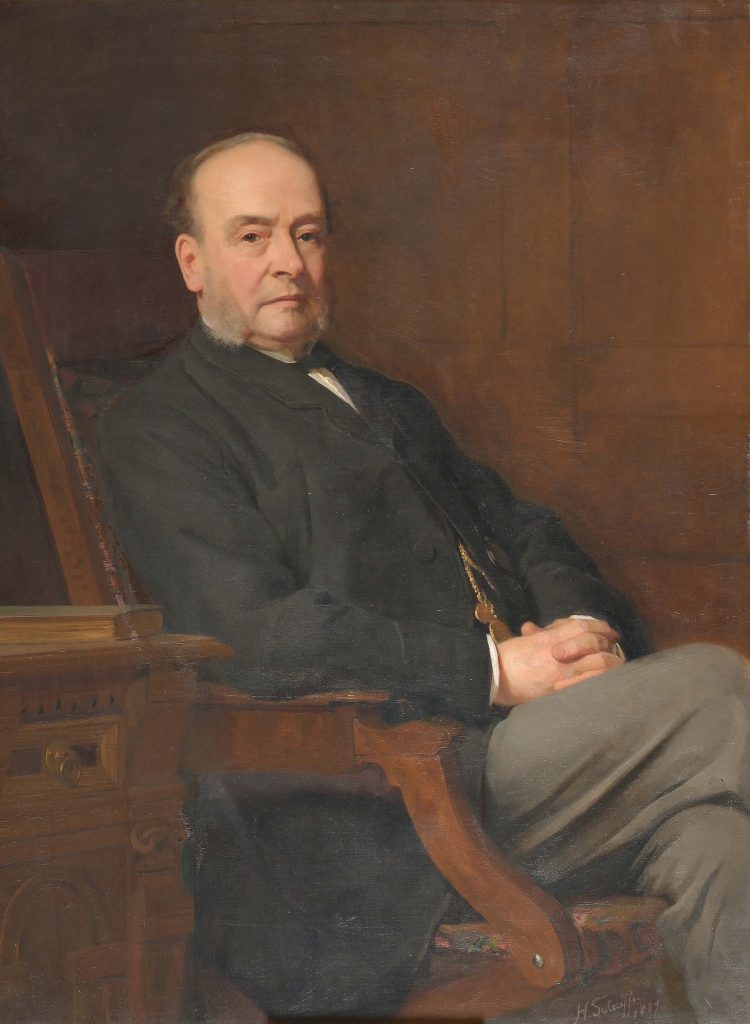
Another painting by a woman is of William Finlay, 2nd Viscount Finlay of Nairn, which was created by the artist Charlotte Blakeney Ward around 1920. Ward, who was from Manchester, had previously exhibited paintings at the Royal Academy, St Ives Society of Arts and, in 1900, at the Paris Salon, an exhibition considered to be the greatest art event in the Western world for much of its history. Ward was a member of the Society of Women Artists, becoming Vice President from 1917 and holding its Presidency from 1923-1931. Some of her other subjects included suffragist Mary Collin and the poet Robinson Jeffers.
Isobel Macleod is another female artist whose work hangs in the Middle Temple. Macleod painted a seated portrait of Alexander Martin Sullivan, c.1958, the last person to be created King’s Serjeant in Ireland in 1920. The painting is oil on canvas and was purchased by the Inn directly from Macleod in October 1958. Sadly, little information is known about Isobel Macleod and her work.

In 2018, the first of three paintings which are both by female artists and depict female sitters was commissioned by the Inn. Painted by Emily MacDuff, this portrayed Master Dawn Oliver, who was, in 2012, the first woman to serve as Treasurer of the Middle Temple. Master Oliver was Called to the Bar in 1965 and was elected a Bencher in 1996. She was the first career academic to be appointed Treasurer, and, during her year in that role, arranged the first Academics’ Dinner at the Inn and the first Amity Visit by members of the Middle Temple to the American Inns of Court.
The painter of this portrait, MacDuff, is a classically trained artist who specialises in portraiture, having graduated from the Florence Academy of Art in 2017. MacDuff has participated in many international art residencies, for example in Seville and Rome, and in 2017, her painting Portrait in Burgundy was shown at the Royal Institute of Oil Painters (ROI). Her painting of Master Oliver was painted over a period of six days using oil on canvas.

More recently, in 2021, Alice Beaven painted two impressive Middle Templars: Master Kate Thirlwall and Master Patricia Scotland, whose portraits are both situated in the Parliament Chamber corridor. Master Scotland was born in Dominica and Called to the Bar at Middle Temple in 1977. She went on to become the first Black woman appointed Queen’s Counsel in 1991, and the first woman Attorney General for England and Wales in 2007. Master Thirlwall was Called to the Bar in 1982. She was selected as a High Court Judge in 2010 and was the first woman from the Middle Temple to be appointed to the Court of Appeal of England and Wales in 2017.
Alice Beaven originally trained as an illustrator at Central St Martins School of Art and worked as a graphic designer, before turning her hand to painting when she created portraits of her children. Following a successful exhibition at Lauderdale House in North London, Beaven’s art has picked up interest and she has undertaken a range of privately commissioned portraits, including the two new portraits for Middle Temple.

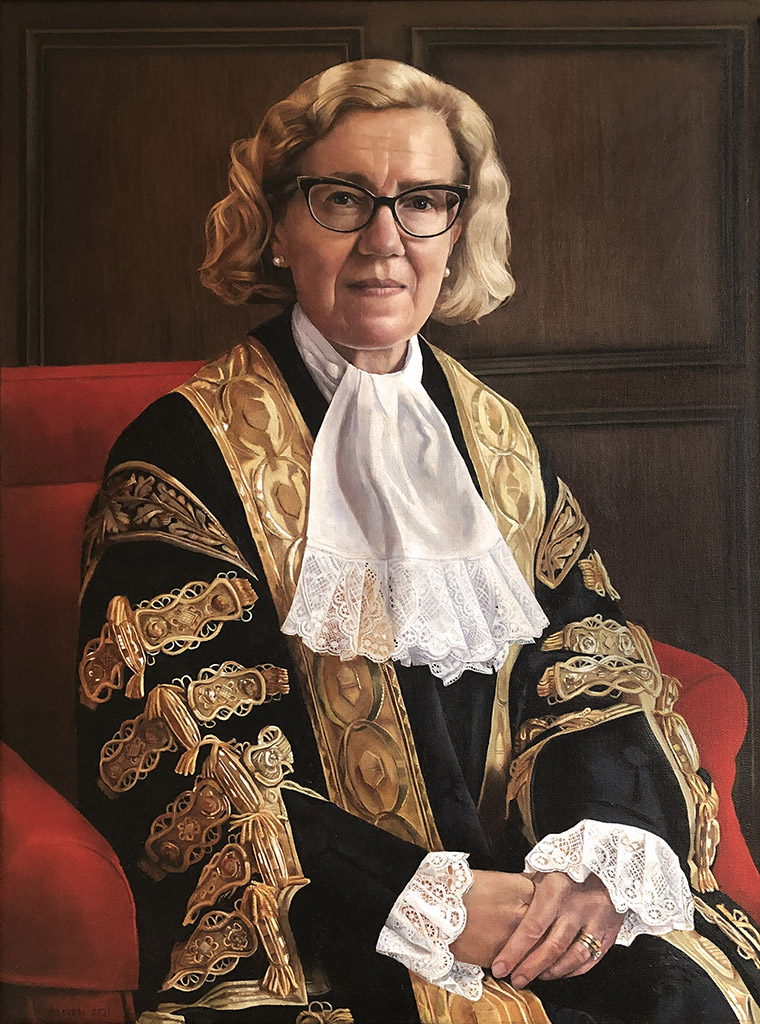
‘Portraits of Master Patricia Scotland and Master Kate Thirlwall by Alice Beaven, 2021’
While the representation of women in the Inn’s collection of paintings, both as subjects and as artists, remains smaller than that of men, as time progresses that representation will no doubt grow, reflective of the contributions made by women – to art, to the Law, and to the Inn.

